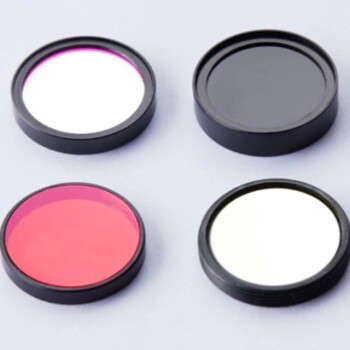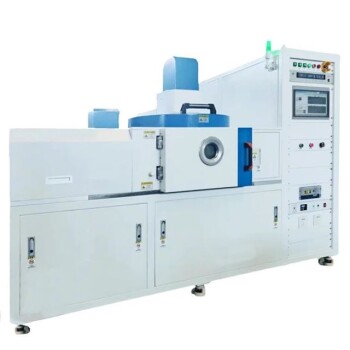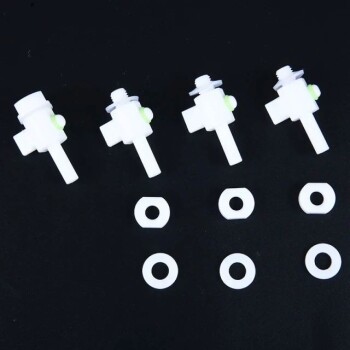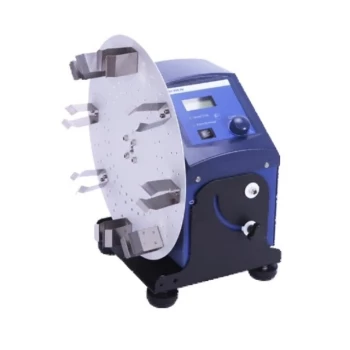Introduction to Optical Filters
Functions of Optical Filters
Optical filters serve multiple critical roles in various systems, ensuring not only the protection of sensitive components but also the enhancement of image quality and the precise isolation of spectral features. These filters act as the gatekeepers, shielding delicate optical systems from harmful environmental factors such as dust, moisture, and physical impacts. By doing so, they significantly extend the operational lifespan of these systems, preventing degradation and ensuring consistent performance over time.
In addition to their protective functions, optical filters play a pivotal role in defining the intensity and quality of images. They selectively filter out unwanted wavelengths of light, allowing only specific bands to pass through. This selective transmission is crucial in applications ranging from photography to scientific instrumentation, where precise control over the light spectrum is essential. For instance, in astrophotography, filters can isolate specific wavelengths to capture detailed images of celestial objects, while in medical imaging, they help in distinguishing between different tissue types based on their spectral signatures.
Moreover, optical filters are indispensable in energy filtering applications. They can isolate specific spectral features by filtering out unwanted energy, thereby enhancing the accuracy and sensitivity of detection systems. This capability is particularly valuable in fields such as spectroscopy and remote sensing, where the identification of specific molecular or atomic signatures is paramount. By carefully tuning the filter characteristics, scientists and engineers can achieve optimal performance in their respective applications, ensuring that only the most relevant spectral information is captured and analyzed.
In summary, optical filters are not merely passive components; they are active participants in the performance and reliability of optical systems. Their ability to protect, enhance, and filter spectral information makes them indispensable tools across a wide array of scientific and technological applications.

Physical Forms of Filters
Optical filters can be integrated into various physical forms, each tailored to specific applications and performance requirements. One common method involves coating filters directly onto outer windows or geometric optics. This approach is particularly effective for filters that need to be integrated seamlessly into optical systems without additional bulk or complexity.
Another significant form is the multi-substrate laminated filter. This type of filter is constructed by layering multiple substrates, each coated with different optical materials. The laminated structure allows for more complex spectral filtering capabilities, as different layers can be designed to interact with light in specific ways. For instance, one layer might be optimized for high transmission in the visible spectrum, while another might be designed to block infrared radiation.
| Filter Type | Description |
|---|---|
| Coated on Outer Windows | Filters applied directly onto the surface of windows or optics for simplicity. |
| Multi-Substrate Laminated | Filters constructed by layering multiple coated substrates for enhanced control. |
The choice between single-substrate and multi-substrate laminated filters depends on the specific needs of the application. Single-substrate filters are generally simpler and more cost-effective, making them suitable for basic filtering tasks. On the other hand, multi-substrate laminated filters offer greater flexibility and performance, but at a higher cost and complexity.
In summary, the physical forms of optical filters—whether coated directly onto surfaces or constructed through multi-substrate lamination—provide a versatile toolkit for managing light in optical systems.

Filtering Methods
Filtering in optical systems can be accomplished through three primary mechanisms: absorption, reflection, and transmission of light energy. Each method offers unique advantages and is suited to different applications based on the required spectral characteristics and environmental conditions.
-
Absorption: This method involves the selective absorption of certain wavelengths of light by materials. The absorbed energy is typically converted into heat. Absorptive filters are often used in applications where it is necessary to remove specific wavelengths from the light spectrum, such as in scientific instruments or photographic filters.
-
Reflection: Reflective filtering relies on the principle that certain materials or coatings can reflect specific wavelengths of light while allowing others to pass through. This method is commonly used in applications requiring high reflectivity, such as in mirrors or anti-reflective coatings, to enhance the efficiency of optical systems.
-
Transmission: Transmission filtering involves allowing certain wavelengths of light to pass through while blocking others. This is achieved through the use of materials with specific optical properties that permit selective transmission. Transmission filters are widely used in various optical devices, including cameras, microscopes, and spectrometers, to isolate and analyze specific spectral regions.
Understanding these filtering methods is crucial for designing and constructing optical filters that meet the precise requirements of different applications. Each method contributes to the overall performance and functionality of optical systems, ensuring optimal light management and spectral analysis.
Construction Methods for Optical Filters
Soft Coatings - Scribing and Laminating
Soft coatings are a critical component in the fabrication of bandpass and edge filters, particularly in environments where moisture resistance is paramount. These coatings are applied to individual substrates, which are then meticulously scribed to achieve the desired filter characteristics. The scribing process involves precisely cutting or marking the coated surfaces to define specific regions or patterns that will influence the filter's performance.
Once scribed, the coated substrates are laminated together using moisture-resistant epoxy. This lamination process not only secures the individual components but also enhances the filter's durability and resistance to environmental factors such as humidity and temperature fluctuations. The epoxy bonds the substrates while maintaining the integrity of the coatings, ensuring that the filter maintains its performance over time.
This method is particularly effective for applications requiring high precision and stability, such as in optical systems where even minor variations in filter performance can significantly impact the overall system's effectiveness. The combination of scribing and laminating with moisture-resistant epoxy ensures that the filters can withstand the rigors of various operational environments, making them ideal for use in a wide range of optical applications.

Soft Coat - Laminated
For bandpass filters that demand exceptional signal-to-noise ratios, the soft coat laminated method is employed. In this process, the components are meticulously coated on separate substrates, ensuring each layer is precisely tailored to enhance the filter's performance. These coated substrates are then laminated together using moisture-resistant epoxy, which not only ensures the integrity of the filter but also provides a robust barrier against environmental factors that could degrade performance over time.
This method is particularly advantageous in environments where high humidity or moisture exposure is a concern. The moisture-resistant epoxy acts as a protective seal, maintaining the filter's performance characteristics and ensuring long-term reliability. By isolating the coated components from external moisture, the soft coat laminated filters can sustain their high signal-to-noise ratios, making them ideal for applications requiring consistent and high-quality optical filtering.
Soft Coat - Argon Gap
The Soft Coat - Argon Gap technique is specifically designed to enhance the durability and performance of filters subjected to intense solar or ultraviolet (UV) radiation. This method involves coating individual components on separate substrates, ensuring that each layer is optimized for its specific function before they are meticulously laminated together.
One of the key features of this technique is the use of moisture-resistant bonding lines during the lamination process. These bonding lines are crucial in maintaining the integrity of the filter under harsh environmental conditions, preventing any degradation due to moisture ingress. By using an argon gap, this method ensures that the filter remains effective even under prolonged exposure to UV radiation, which can cause significant damage to less protected filters.
The meticulous process of coating on separate substrates and subsequent lamination not only enhances the filter's resistance to environmental factors but also ensures that the filter maintains its spectral characteristics over time. This makes the Soft Coat - Argon Gap technique an ideal choice for applications where high solar or UV radiation is a constant concern, such as in space exploration or high-altitude aviation.
In summary, the Soft Coat - Argon Gap technique offers a robust solution for filters exposed to extreme solar or UV radiation, ensuring long-term performance and reliability through its advanced coating and lamination processes.
Hard Coat - Unit Parts Spectral Dynamics
Hard filter coatings are meticulously deposited on individual substrates, a process that demands precision and control. These coatings are engineered to exhibit specific spectral characteristics, but they are not impervious to environmental influences. Notably, the spectral response of these hard-coated filters can shift in response to changes in humidity. This phenomenon is particularly relevant in environments where humidity levels fluctuate, potentially affecting the performance of optical systems reliant on these filters.
To mitigate these spectral shifts, advanced techniques are employed to stabilize the coatings. For instance, the use of moisture-resistant epoxies during the lamination process can help to minimize the impact of humidity on the spectral dynamics of the filters. Additionally, encapsulation methods can be implemented to further protect the hard-coated substrates from environmental factors, ensuring more consistent spectral performance over time.
| Environmental Factor | Impact on Spectral Dynamics | Mitigation Techniques |
|---|---|---|
| Humidity | Spectral shifts | Moisture-resistant epoxies, encapsulation |
Understanding and addressing the spectral dynamics of hard-coated filters is crucial for maintaining the integrity and accuracy of optical systems. By implementing robust construction methods and protective measures, the reliability of these filters can be significantly enhanced, ensuring they perform optimally under varying environmental conditions.

Hard Coat - Multi-Element - Laminated for Stabilization/Assembly
In the realm of optical filter construction, the Hard Coat - Multi-Element - Laminated for Stabilization/Assembly method stands out for its robust capabilities in enhancing the durability and stability of multi-substrate assemblies. This technique involves the deposition of hard coatings onto one or more substrates, followed by lamination with moisture-resistant epoxy. This process not only ensures the mechanical stability of the assembly but also fortifies it against environmental factors such as humidity and temperature fluctuations.
The lamination step, in particular, is crucial as it employs epoxy that is specifically formulated to resist moisture, thereby preventing delamination and maintaining the integrity of the optical properties over time. This method is particularly advantageous in applications where the filter assemblies are exposed to harsh conditions, such as in aerospace or industrial environments.
Moreover, the multi-element nature of this approach allows for the integration of various optical functionalities within a single assembly, enhancing both the efficiency and versatility of the filter system. The combination of hard coatings and moisture-resistant lamination results in a filter structure that is not only stable but also capable of withstanding the rigors of prolonged use.
In summary, the Hard Coat - Multi-Element - Laminated for Stabilization/Assembly method represents a significant advancement in the field of optical filter construction, offering enhanced stability, durability, and environmental resilience.
Hard Coat - Multi-Element - Laminated Assembly
The Hard Coat - Multi-Element - Laminated Assembly process involves the meticulous application of Stabilife® hard filters onto substrates, followed by the lamination of these components using epoxy. This method is particularly advantageous for assembling multiple optical elements into a single, cohesive unit. The epoxy bonding not only ensures structural integrity but also enhances the overall durability and resistance to environmental factors such as humidity and temperature fluctuations.
Key features of this assembly technique include:
- Precision Coating: The Stabilife® hard filters are precisely deposited onto the substrates, ensuring uniform coverage and optimal performance.
- Moisture-Resistant Epoxy: The use of epoxy in the lamination process provides a moisture-resistant bond, safeguarding the optical elements from degradation due to environmental exposure.
- Multi-Element Integration: This method allows for the seamless integration of multiple optical elements, enhancing the functionality and versatility of the final assembly.
By combining these elements, the Hard Coat - Multi-Element - Laminated Assembly process ensures that the resulting optical filter is both robust and highly effective in various applications.
Hard Coating - Multiple Elements - Mechanical Assembly
The integration of Stabilife® Hard Filter Coating on substrates is a sophisticated process that involves not only the application of advanced coatings but also the precise mechanical assembly of these components. This assembly process is crucial for ensuring the durability and functionality of the optical filters, particularly in environments where mechanical stress and physical impacts are common.
The mechanical assembly of these coated substrates typically involves the use of machined brackets and various mechanical hardware. These components are carefully selected and engineered to provide a stable and secure fit, ensuring that the optical filters remain intact and functional under various operational conditions. The brackets are often custom-designed to match the specific dimensions and requirements of the coated substrates, ensuring a perfect fit and optimal performance.

In addition to the brackets, the assembly process also incorporates a range of mechanical hardware such as screws, bolts, and clamps. These elements are essential for securing the coated substrates in place, preventing any movement or misalignment that could compromise the filter's performance. The choice of hardware is also critical, as it must be compatible with the coating materials to avoid any chemical reactions or degradation over time.
The mechanical assembly process is meticulously executed to ensure that the optical filters are not only securely fastened but also aligned to precise specifications. This alignment is particularly important for maintaining the filter's optical properties, such as its ability to accurately transmit or block specific wavelengths of light. Any misalignment could result in spectral shifts or reduced performance, which could be detrimental in critical applications.
Overall, the mechanical assembly of Stabilife® Hard Filter Coating on substrates is a complex but essential step in the construction of optical filters. It ensures that the filters are robust, reliable, and capable of performing their intended functions under a wide range of conditions.
Related Products
- Narrow Band Pass Filters for Precision Applications
- Shortpass Filters for Optical Applications
- Longpass Highpass Filters for Optical Applications
- Custom PTFE Teflon Parts Manufacturer for Sampling Filters
- RF PECVD System Radio Frequency Plasma-Enhanced Chemical Vapor Deposition RF PECVD







